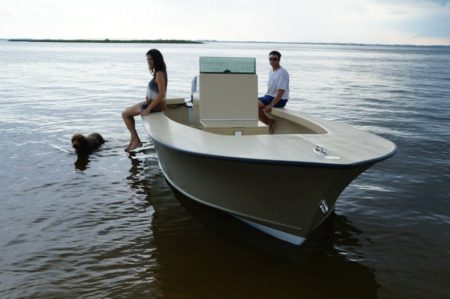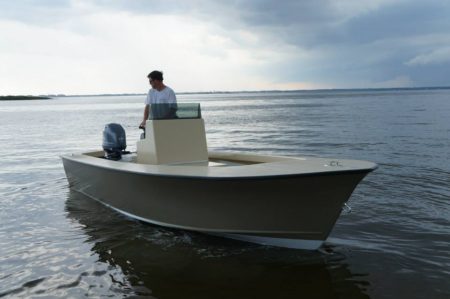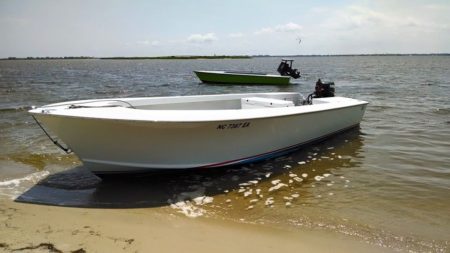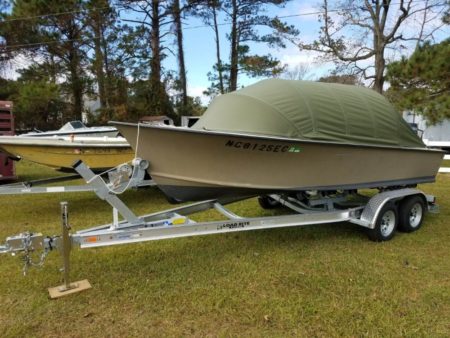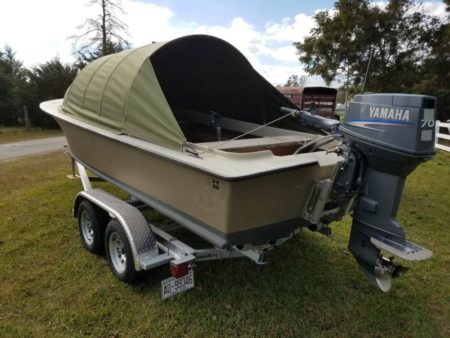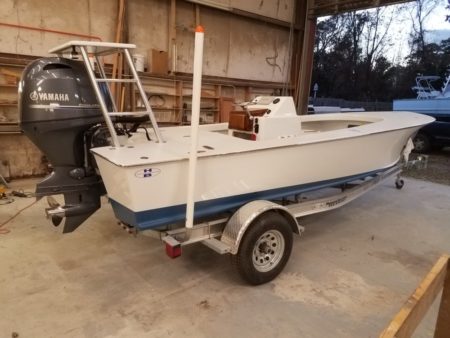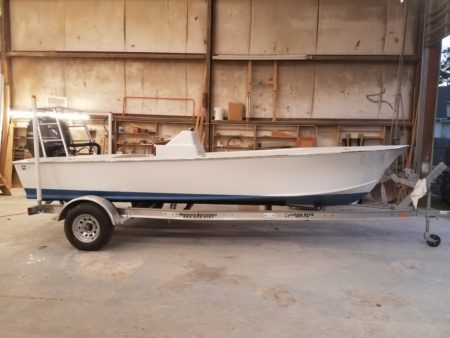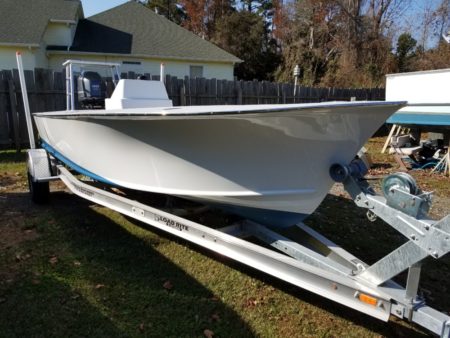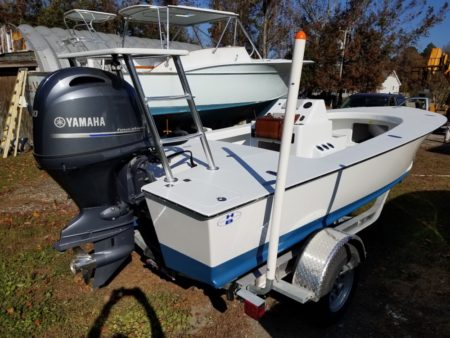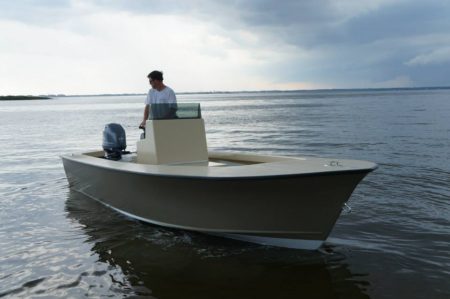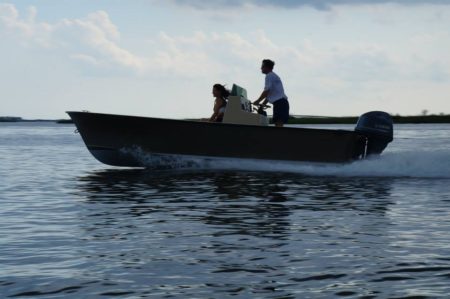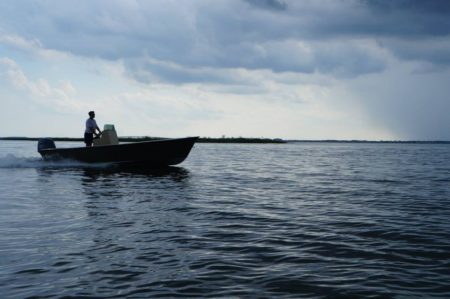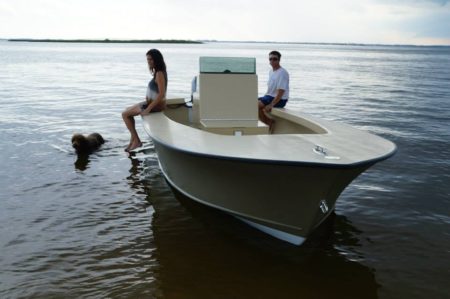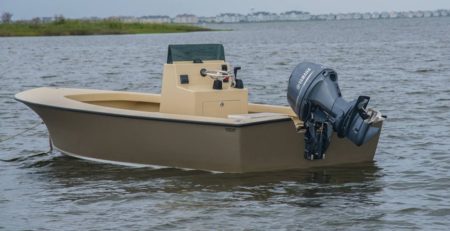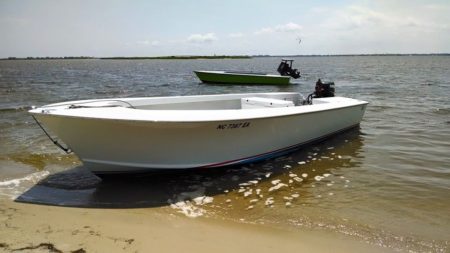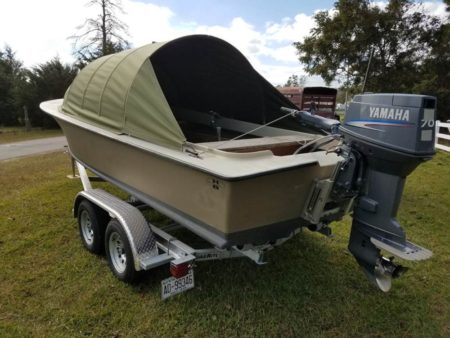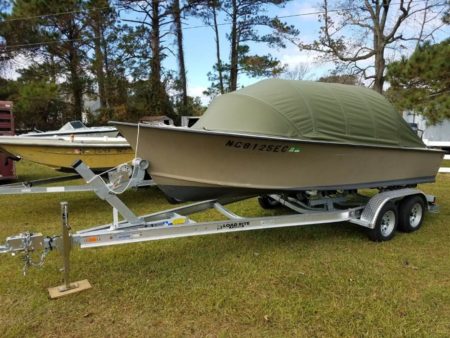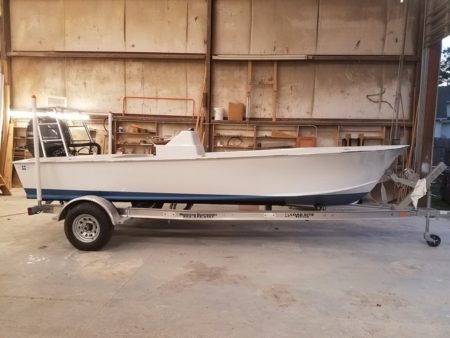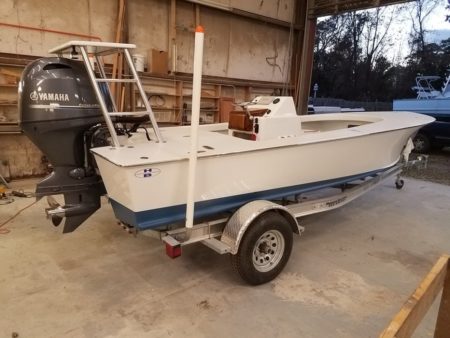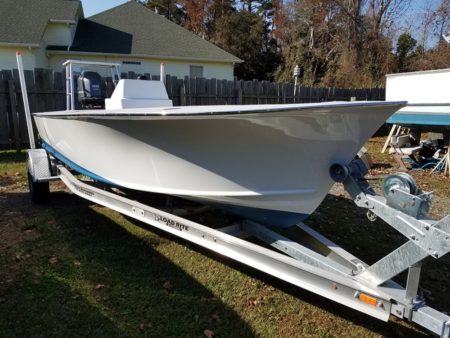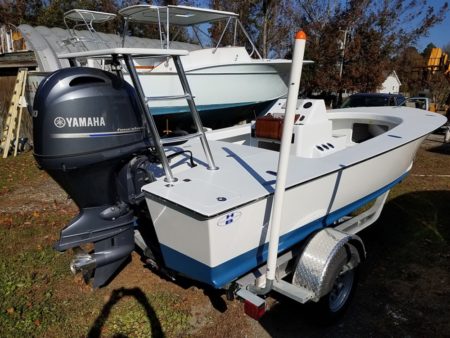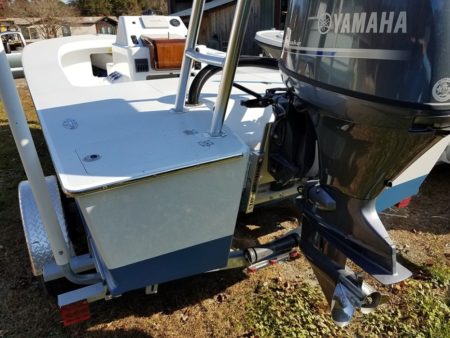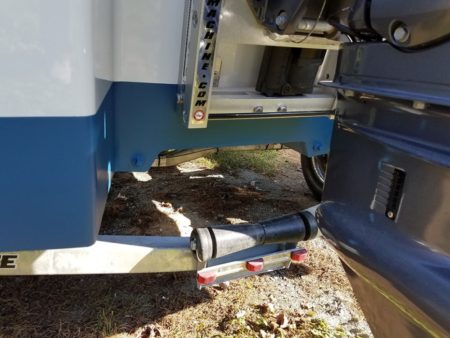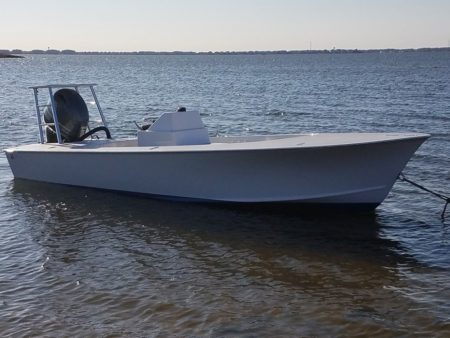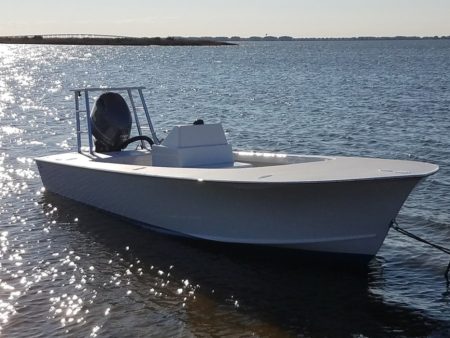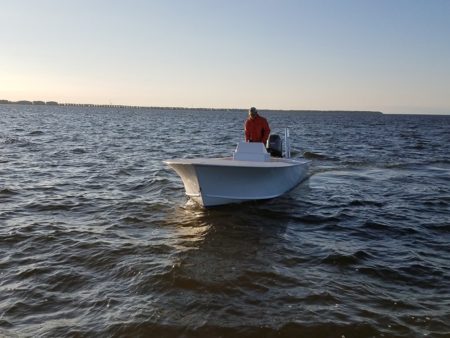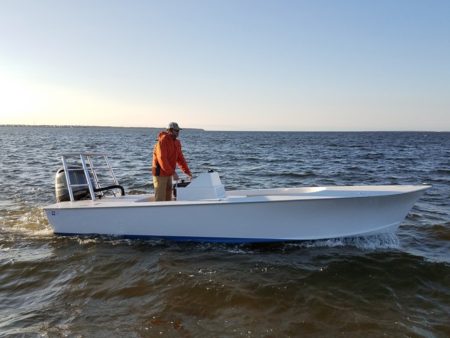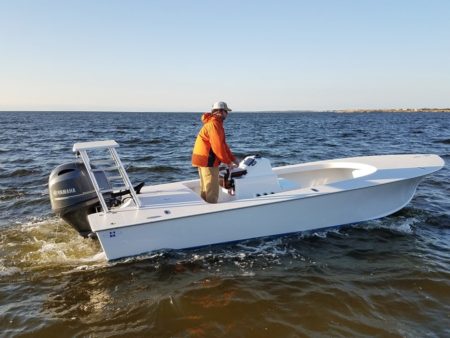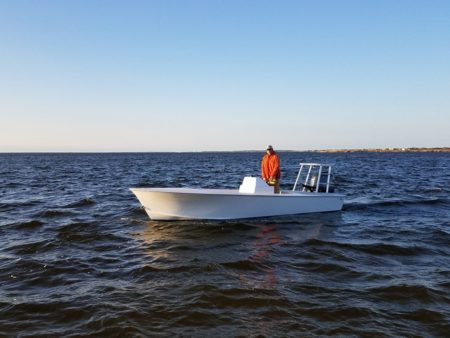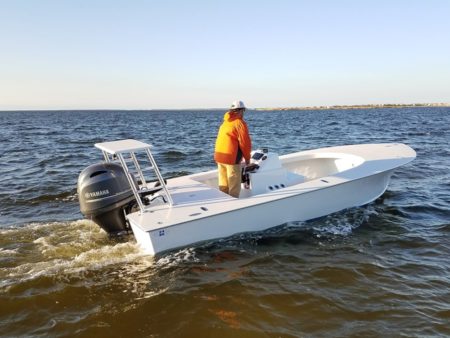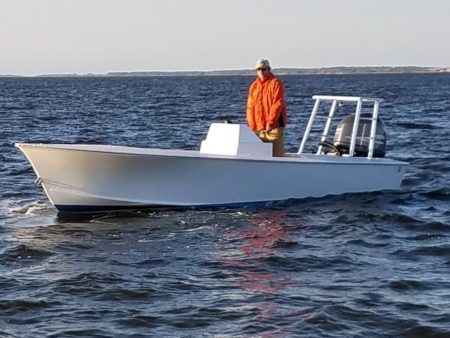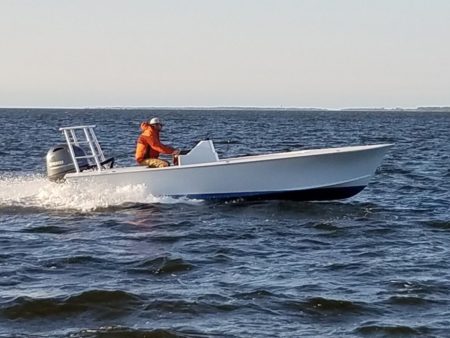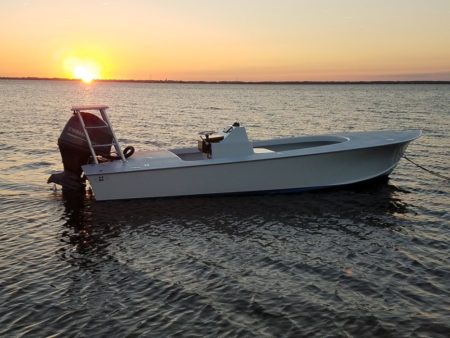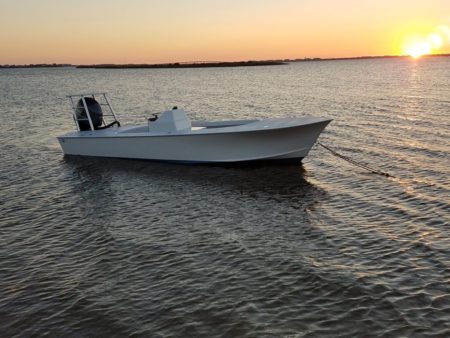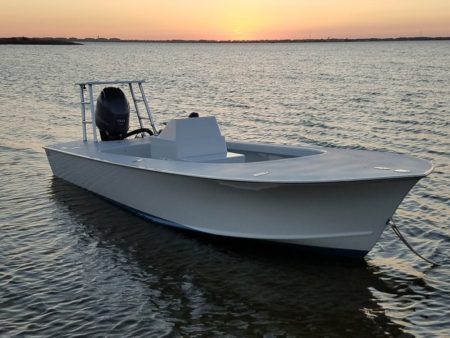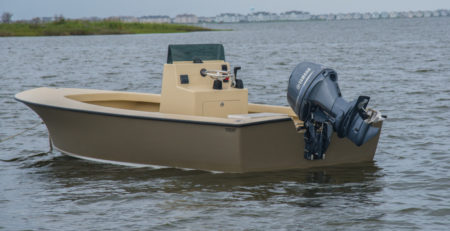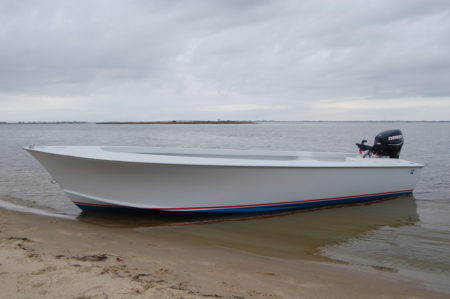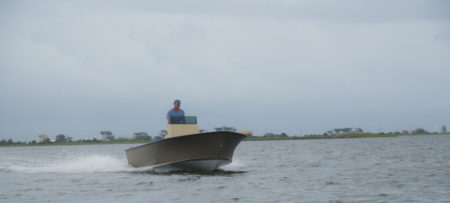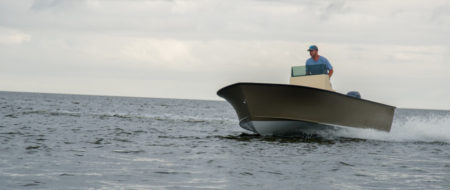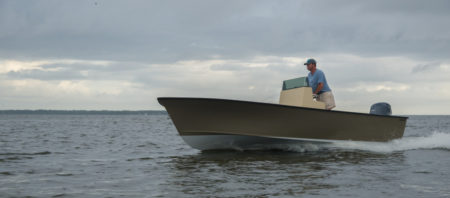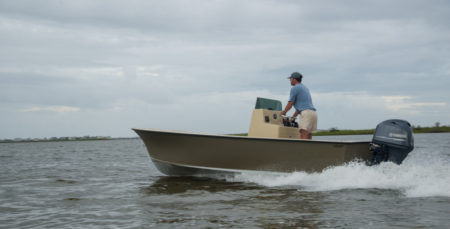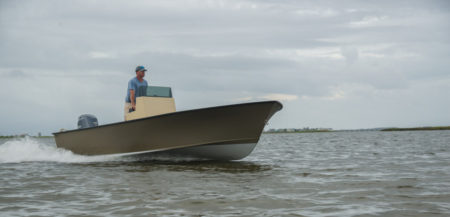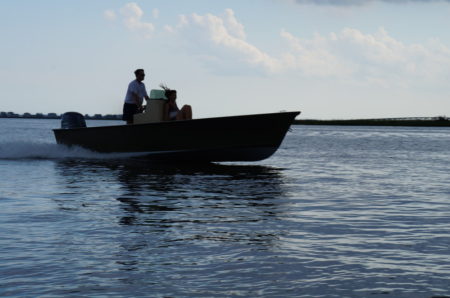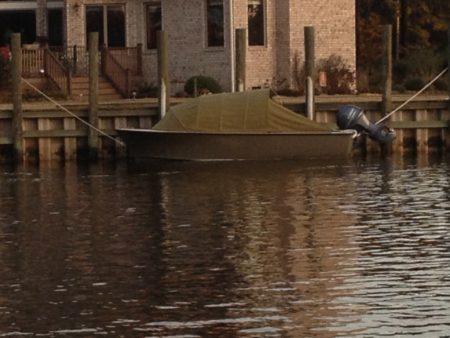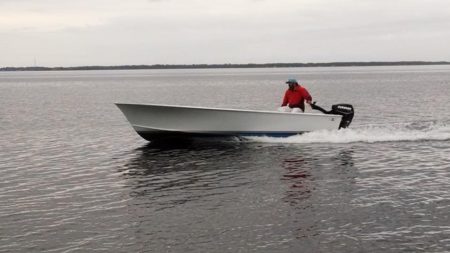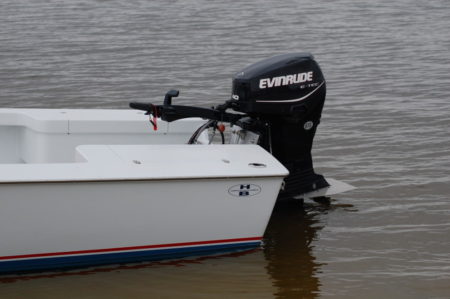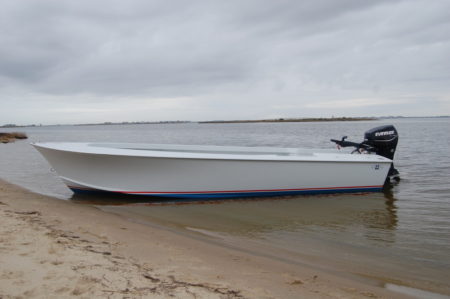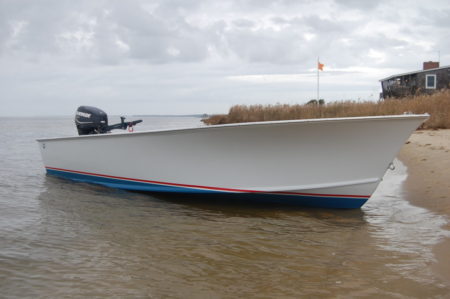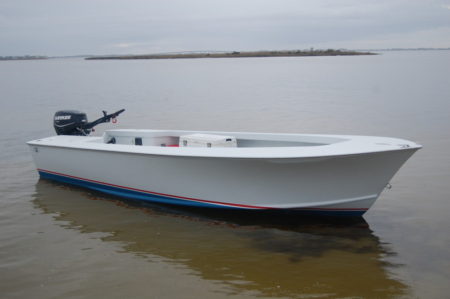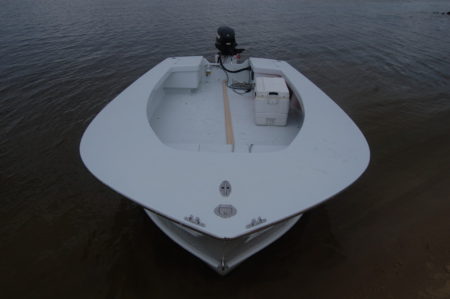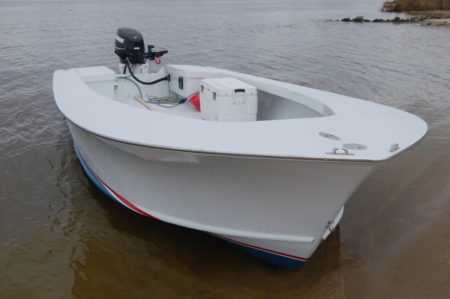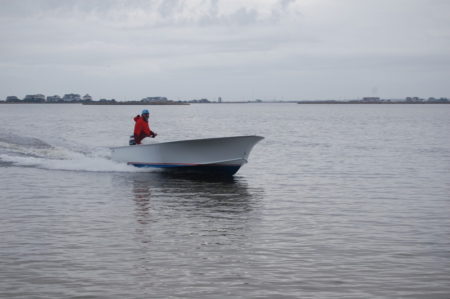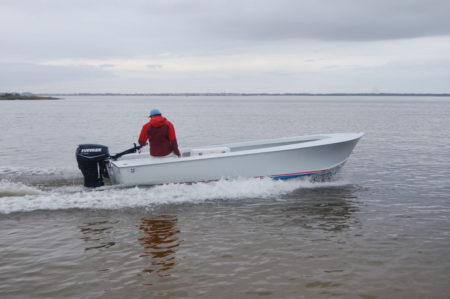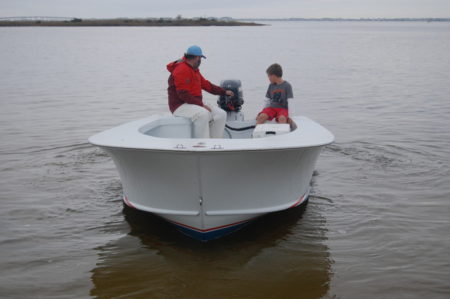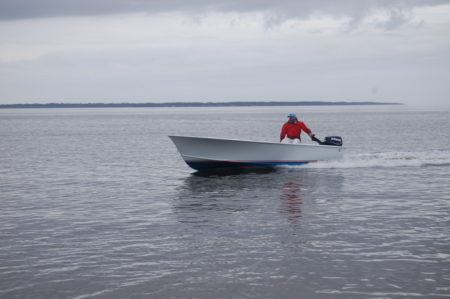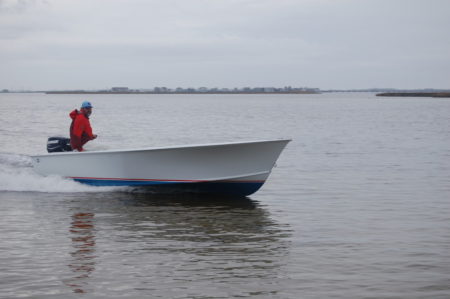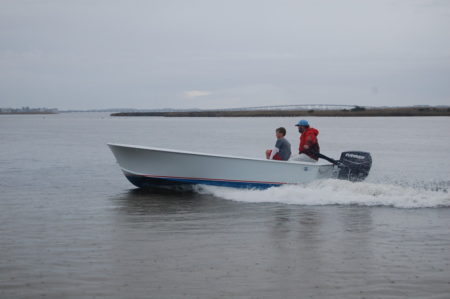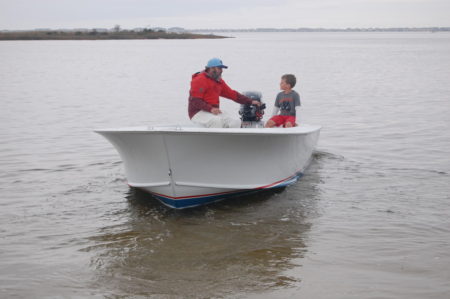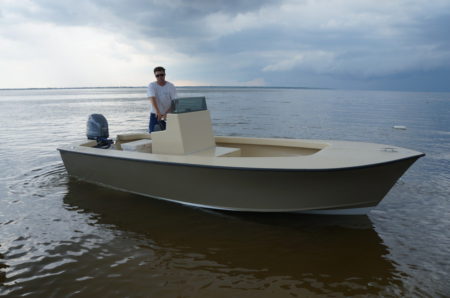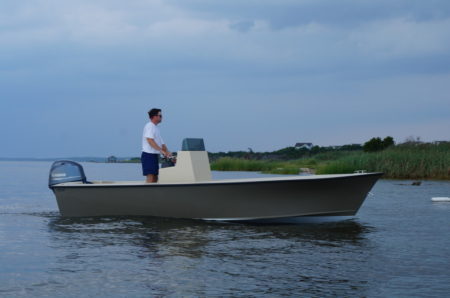A Carolina-style skiff, with a tunnel hull for shallow draft plus a sharp entry and moderate flare for a smooth and dry ride. This boat is perfect for getting around the shoals of the sounds while still secure enough to confidently brave the inlets.
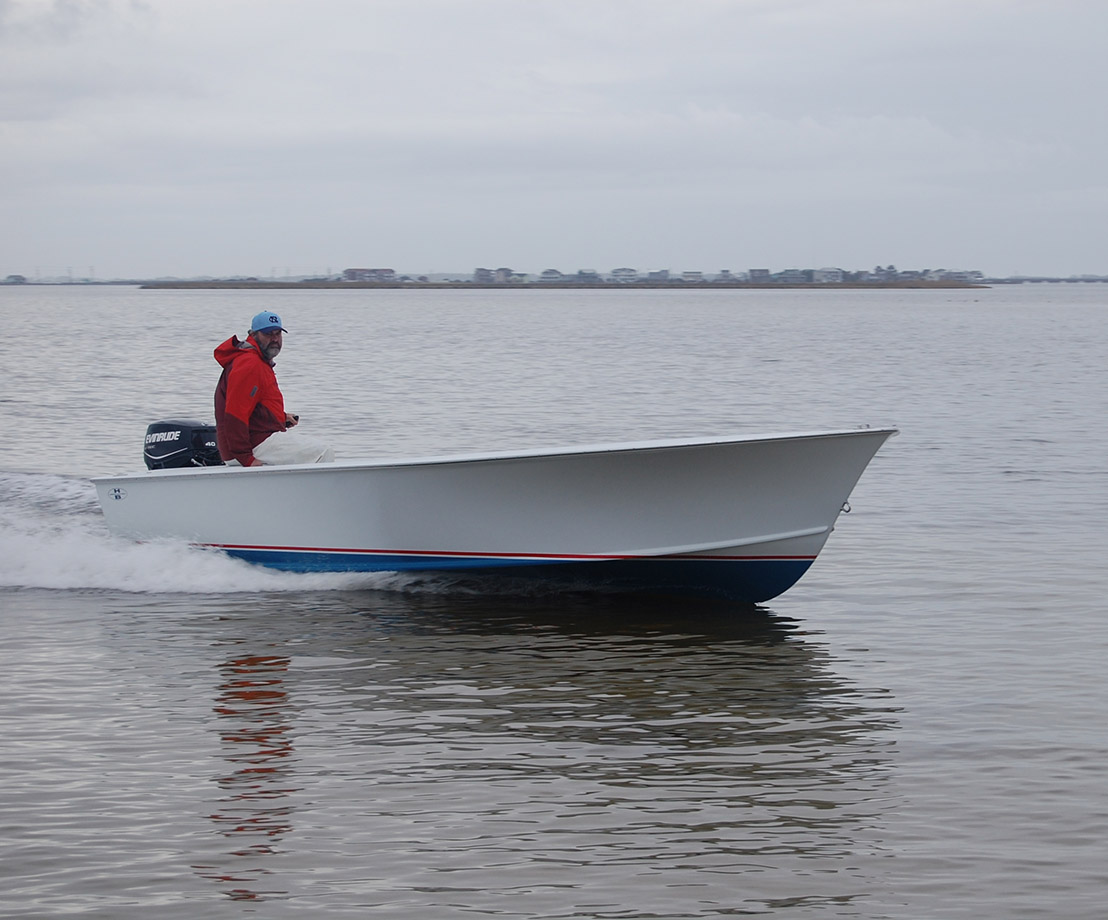
“Having been raised in a family with a long heritage of boat building, I can honestly tell you this boat is as close to pure perfection you can get in a 19 foot boat, as far as its lines, handling, stability, ride, ability to carry a heavy load and handle any sea conditions, while being able to run in some very skinny water.” Buddy Creef, Manteo, NC, Harrison Boatworks 19′ Carolina Tunnel Skiff owner.
The 19′ Carolina Tunnel Skiff has an aggressive entry and a considerable amount of flare, as well as a similar tunnel to my other tunnel designs. The running bottom is similar to that of my 22′ in that it has a pronounced entry while still having a broad chine forward, which gives it superior stability and weight-carrying capabilities.
Hull #1
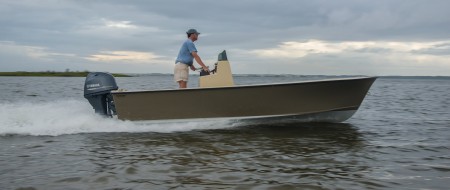
19′ Carolina Tunnel Skiff with center console and open layout
As always, my design began with determining the amount of deadrise at the transom, the progression of that deadrise to the sharper entry forward, the amount of tumblehome (rounded shape) at the stern, and the progression into the moderate flare up forward. I also began with the height from the chine to the sheerline at the transom progressing into the depth of the rabbet line or the keel. This determines how the boat sits in the water and the rake of the shearline.The progression of deadrise from the transom to the forefoot, or entry, is the key. The proper progression, which depends on the length of the boat, is what makes the boat run efficiently and comfortably.
After deciding on the specs of the boat, I then lofted the boat, built the jig and cold-molded the transom and stem and keel. Once these members were led into the jig, along with the other longitudinals (i.e., chine log, sheer clamp and battens), she was soon ready to be planked. The planking schedule was two layers of 3/8″ ocoume on the bottom and two layers of 1/4″ ocoume on the sides. After the boat was finished, glassed inside and out, with console, self-baling deck, washboards and the works, she came out to weigh 1650 lbs. The owner chose the console model with hydraulic steering and a 70 hp Yamaha, as well as the Dull Dead Grass hull color, solid rubber rub rail and a straightforward open deck layout. We see around 8 mpg and about 35 mph top end with this boat.
What we ended up with is an efficient, stable, smooth-running boat that has a good load-carrying capability for its size and power, while still only drawing 8 inches of water. I feel like the final results of this design were successful and the 70 is more than enough horsepower for this hull.
Hull #2
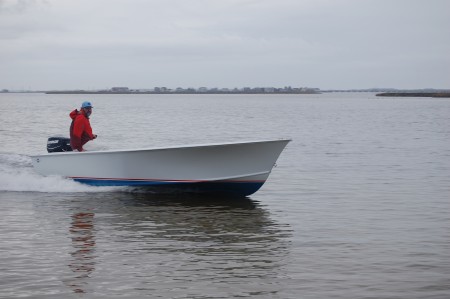
19′ Carolina Tunnel Skiff with tiller.
Hull #2 is outfitted with a 40 hp Etech tiller and totally open layout. This client wanted a shallow-draft skiff for fishing in the sounds but wanted big-water capabilities for heading out Oregon Inlet into the ocean. He chose a casting deck forward, which houses a 16 gallon fuel tank, anchor, PFDs, lines, etc. He chose aft seats, which double as storage and contain battery, panel, hydraulic pump, etc. He also chose a solid stainless steel rub rail and classic “Sportsman” paint scheme — Chevy white hull and decks, blue anti-fouling bottom paint and red boot stripe. The tiller version draws around 8″ at the entry and will top out around 30 mph.
Here’s what he had to say about the boat: “This boat has been on my drawing board for about 15 years, and it started coming to life about 4 years ago with one comment to Patrick. Once the design was worked out, the first hull went to a customer in Currituck due to his time table and allow us to check the performance. When we test ran hull 1, with my 40 etec, I had no doubt it was a perfect winner! After a few very minor tweaks, the boat … is the final product. Having been raised in a family with a long heritage of boat building, I can honestly tell you this boat is as close to pure perfection you can get in a 19 foot boat, as far as its lines, handling, stability, ride, ability carry a heavy load, and handle any sea conditions, while being able to run in some very skinny water. I have very high standards and expectations, and I will put this boat up against anything on the water of similar size.”
This is not a production boat. Each boat is crafted by hand and customized to the owner’s specifications.
Base Hull Specs:
- LOA: 19′
- Beam: 7′, 6″
- Draft: 8″ depending upon power and load
- Weight: 1650 lbs.
- Deadrise progression: 7 degrees at transom, 35 degrees at entry
- Cold-molded unibody construction
- 1208 bi-axle fiberglass inside and out
- All West System epoxy
- 11″-wide washboards and large bow deck for casting
- Self-bailing deck
- Nonskid deck and washboards
- recessed thru bolted stainless steel cleat
- Recessed LED bow light
- Custom console (high or low profile) with toe kick and fuel storage
- Molded windshield
- Stainless or rubber rub rail
- Recommended power range: 40 to 90 hp
- Stainless steel in gunnel rod holders
Options:
- Live-well fish box
- Bow-accessible anchor storage
- Leaning post
- Hydraulic steering
- Hydraulic jack plate
Coming soon
